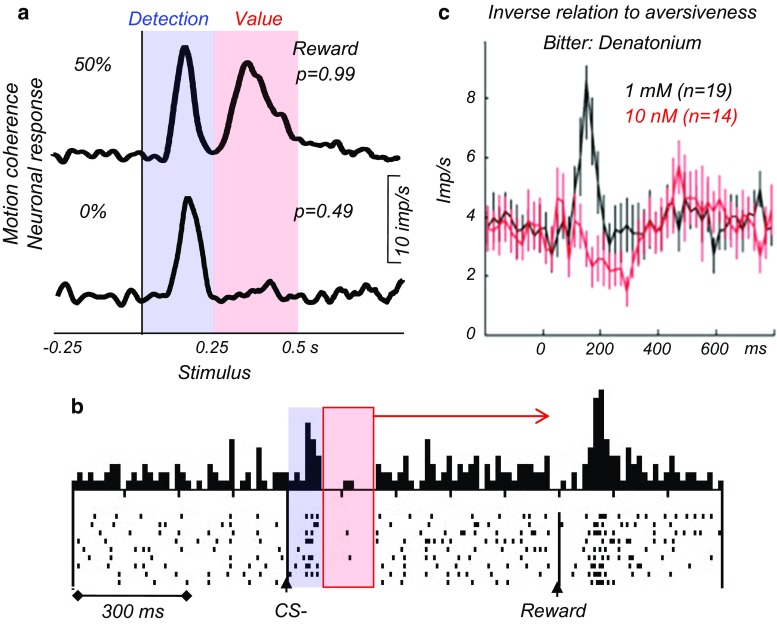Fig. 1.
Basic characteristics of phasic dopamine responses. a Two dopamine response components: initial detection response (blue), and subsequent value response (red) in a dot motion discrimination task. The motion coherence increasing from 0 to 50 % leads to better behavioral dot motion discrimination, which translates into increases of reward probability from p = 0.49 to p = 0.99 [dopamine neurons process reward probability as value (Fiorillo et al. 2003)]. The first response component is constant (blue), whereas the second component grows with reward value derived from probability (reward prediction error). From Nomoto et al. (2010). b Accurate value coding at the time of reward despite initial indiscriminate stimulus detection response. Blue and red zones indicate the initial detection response and the subsequent value response, respectively. After an unrewarded stimulus (CS-), surprising reward (R) elicits a positive prediction error response, suggesting that the prediction at reward time reflects the lack of value prediction by the CS-. From Waelti et al. (2001). c Inverse relationship of dopamine activations to aversiveness of bitter solutions. The activation to the aversive solution (black, Denatonium, a strong bitter substance) turns into a depression with increasing aversiveness due to negative value (red), suggesting that the activation reflects physical impact rather than punishment. Imp/s impulses per second, n number of dopamine neurons. Time = 0 indicates onset of liquid delivery. From Fiorillo et al. (2013b)

